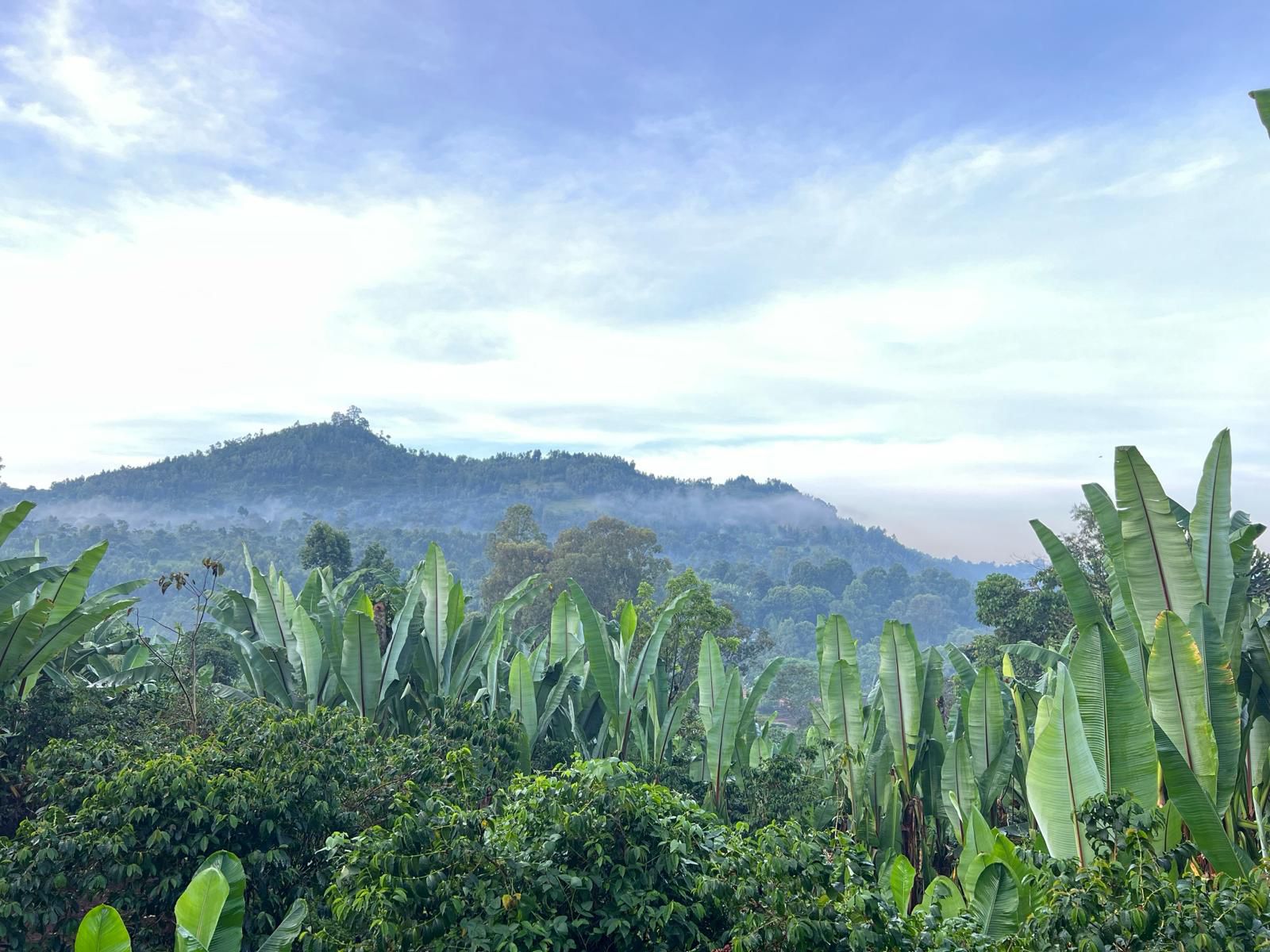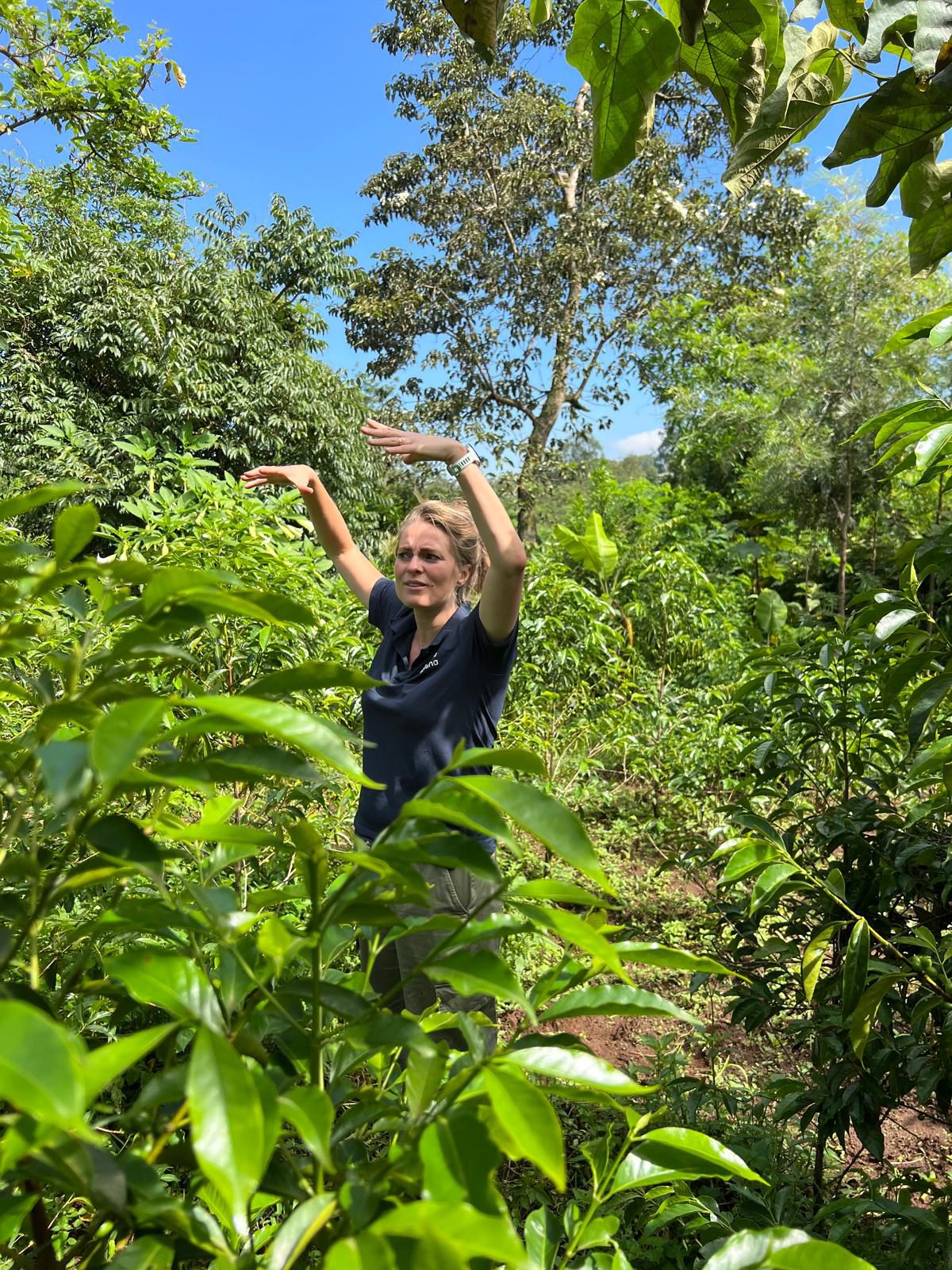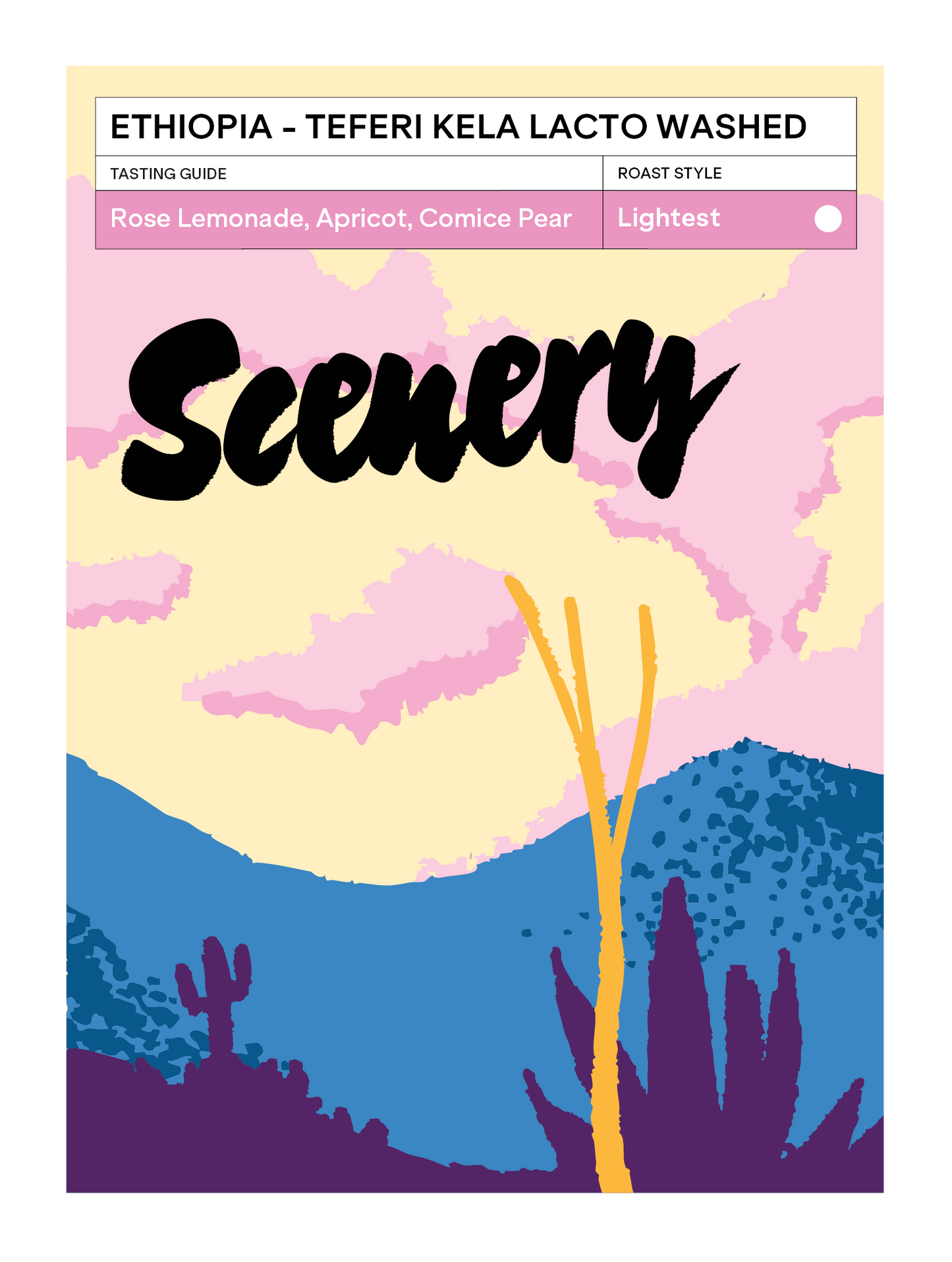




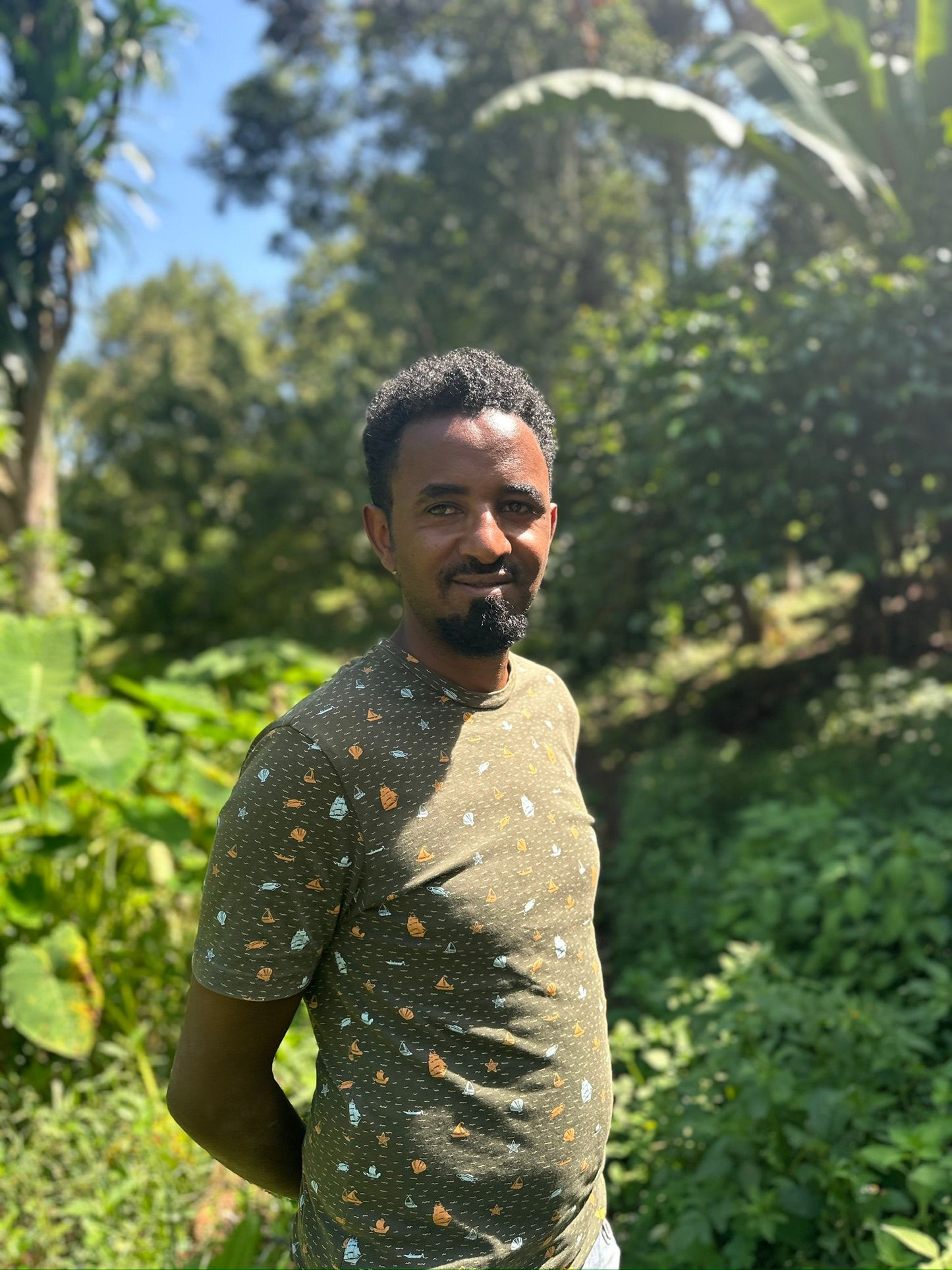

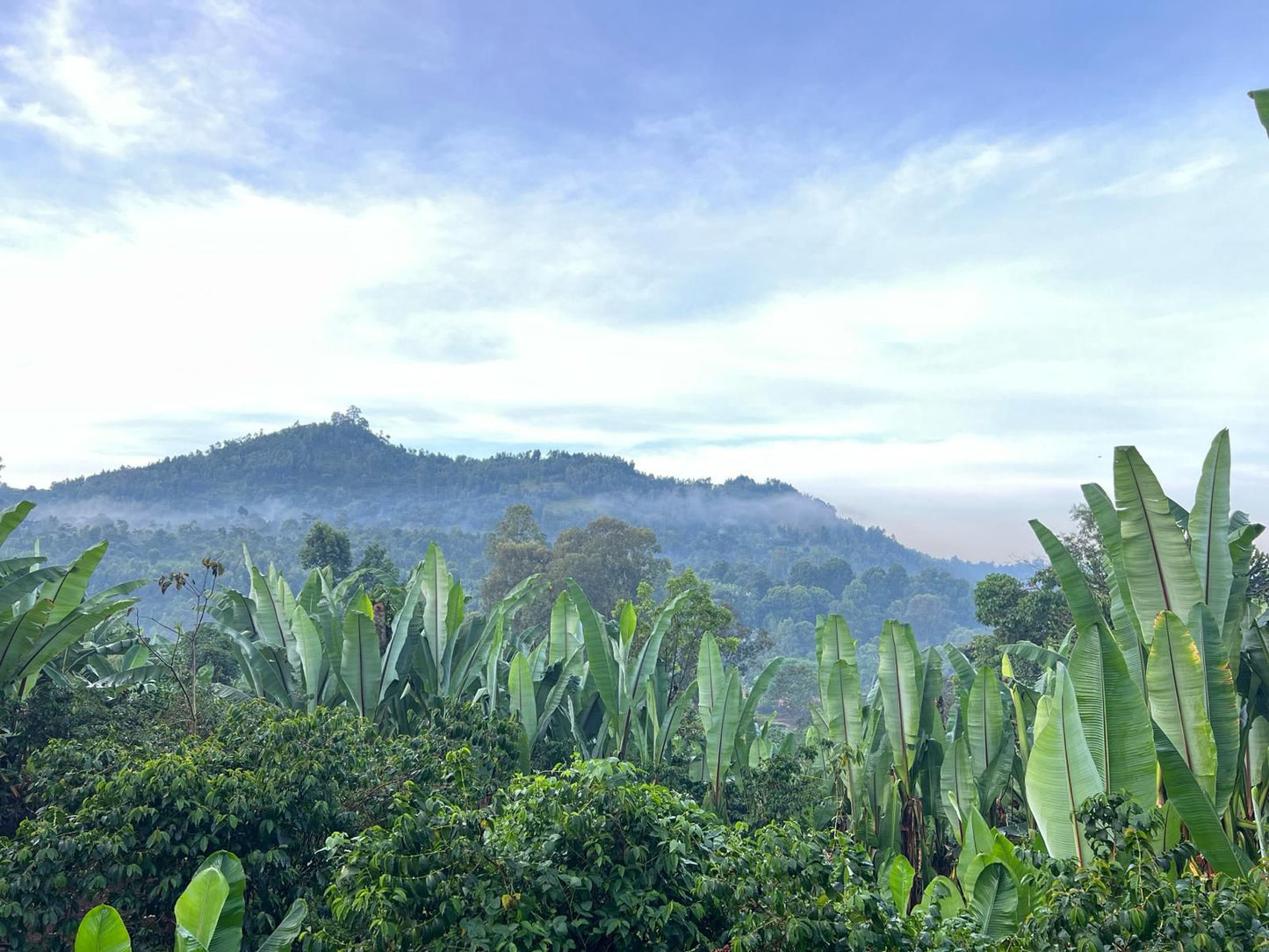
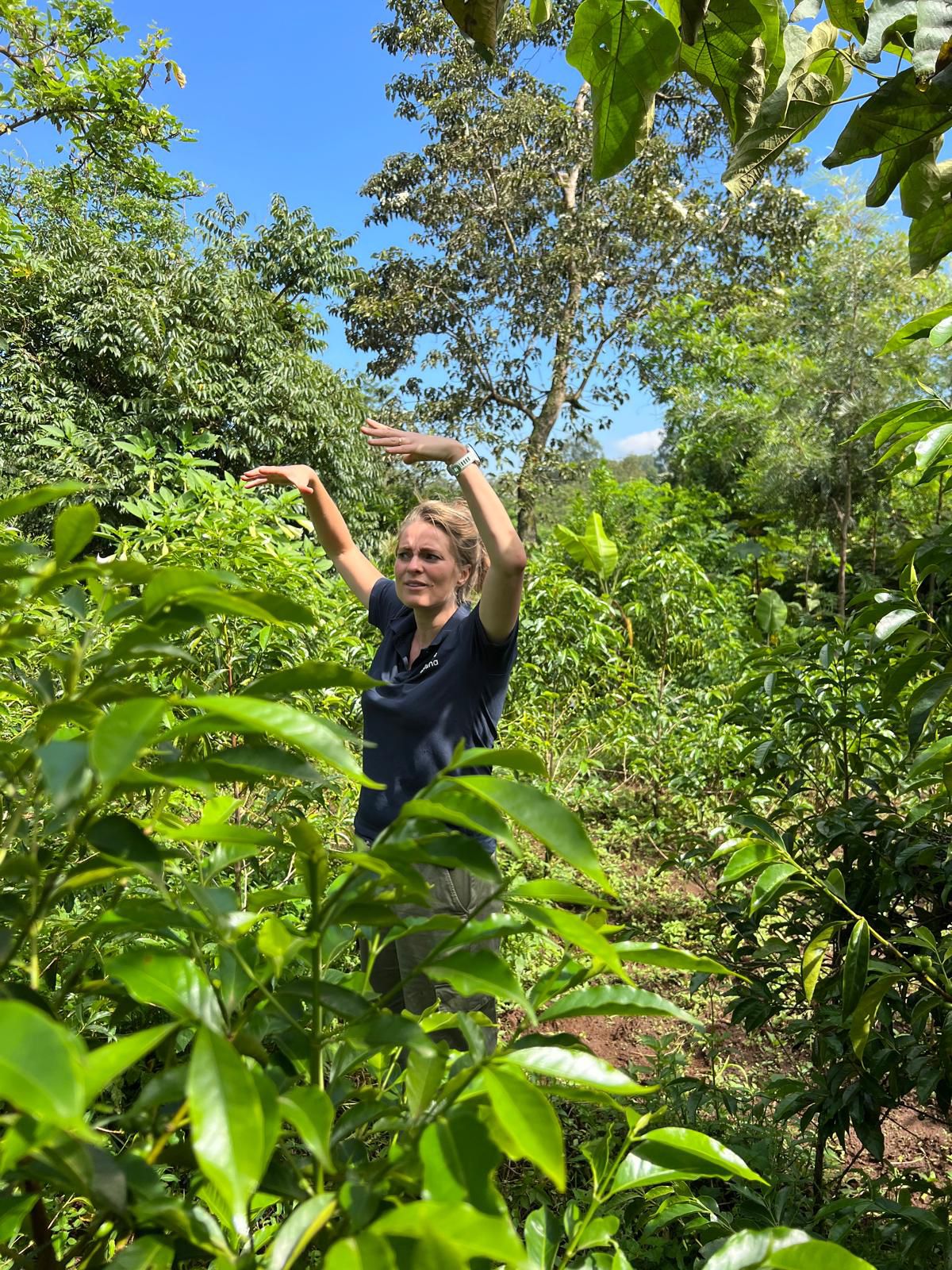
Brew Guide:
Best Brewed with: Filter
Lightest Influence: Sitting somewhere between a washed process and a natural in how it roasts, we're continually tweaking this roast to bring out more and more sweetness and florals
Best Rested: 3-4 weeks
Filter: 62g/L, 96°C when fresh but when well rested you can go down to 93-94°C
Espresso: 18g/45g/30-35s. Can also work as a turbo
We’re tasting: Ultra-sweet aromatics of brioche, honeysuckle and lady grey tea. In the cup the floral and effervescent sparkle of rose lemonade, ripe apricot, comice pear, with a buttery body. As it cools the citrus warmth of lady grey tea comes to the fore, alongside honeyberry.
Traceability
Country of Origin: |
Ethiopia |
Region: |
Teferi Kela Kebele, D’ara Otilicho Woreda, Sidamo, SNNPR |
Producer: |
Dawit & Hester Syoum-Westerveld |
Station: |
Bette Buna Teferi Kela |
Variety: |
Enat Buna (a local landrace), JARC 74112/74158 |
Elevation: |
1988-2200 MASL |
Process: |
Lacto Anoxic Washed: Cherries from collected from the Bette Buna Teferi Kela farm & delivered to the mill, a 20 min drive away from the farm. Cherries hand sorted, floated and skimmed to pre-sort before de-pulping through the wet mill. Parchment coffee placed in air-lock fermentation barrels alongside a 2% salt brine, before sealing. Parchment* lacto-fermented in an anoxic environment for 96 hrs before being removed and washed to remove mucilage.
|
Import Partner: |
Direct with Bette Buna (facilitated via Falcon) |
Harvest |
Crop 24/25 Arrived UK: 14/07/25; Second year working with Bette Buna |
The Story
Lacto processing is a term that's oft been abused - used previously as another word for anoxic/"anaerobic" - tilting the fermentation environment to favour lactobacillus species for fermentation via low oxygen environments. But there is the other, more common use (outside of coffee) - using a 2-5% salt solution to lactoferment foods at home. If you've read the Noma guide to fermentation, you'll know all about this.
We first tried true lactofermented coffee attending a "virtual fermentation training camp" run by the esteemed Lucia Solis, hosted by Assembly many moons ago. On the table was 3 ferments from the same source of cherries, processed on the same day and in the same environment. One with almost zero fermentation, with the mucilage removed via citric acid; another lacto-fermented, and a third with a yeast inoculated fermentation. You might imagine adding 2% salt to the fermentation liquid might produce salty coffee but it's completely indetectable in the final cup. In both the FTC coffee and this lot, the fermentation profile tilts intensely sweet and with a real weighty nature to the body
(For those that are curious - for the FTC coffee, zero ferment was dull & boring but showed the inherent green coffee character with a surprising amount of inherent acidity, lacto-fermented was fruity, very sweet and heavy bodied, and the yeast ferment was lighter and had some complex top notes not present in the zero-ferment profile)
By taking a coffee that inherently is very bright, floral and full of complex top notes - then lacto-fermenting it with 2% salt - this final lot is really good.
Hester tells us that running these experiments is a great experience for the team - having fun and trialling new approaches as a way to keep up the motivation during the gruelling toil that harvest brings. We're stoked this one worked out as well as it did and we're certain to bring it back next year.
Bette Buna:
The first Bette Buna (“House of Coffee”) farm was founded in 2019, after Dawit inherited his grandfather’s coffee farm in Sidama. Dawit’s grandfather was a respected community leader, and with that in mind Hester and Dawit set out to create a sustainable, community led future for coffee farming in Ethiopia. They intend to achieve this by producing higher quality coffees, with collaboration and community development intimately linked to this. The funds from fair pricing and export help pay for community education and increased living standards, with living incomes a pillar of the Bette Buna mission.
Dawit and Hester have been purchasing the farms immediately abutting the Taferi Kela farm, adopting a high standard for purchasing (a minimum price for the land, alongside paying out 2 years of future production profits for the land at the point of sale), alongside offering the farmers employment at Taferi Kela.
By acting as a vertically integrated supply chain and increasing the export value of the centrally processed coffees, this both increases the income of the farmers turned employees beyond what selling their cherry to a station might have done, and socialises the profits whilst removing personal risk. Bette Buna have also established a nursery at Taferi Kela, distributing both improved JARC cultivars (higher yielding and more disease resistant) as well as shade trees and staple food crops. The impact of this nursery in terms of livelihood for subsistence farming cannot be understated, and the return to agro-forestry by increased shade tree planting is a positive move on a warming planet. The work to establish more shade trees is hand-in-hand with a rewilding project to increase the native forest cover in the immediate area around Taferi Kela.
Dawit and Hester’s second farm (the farm this lot hails from) is located in Guji, a region that has become famed for the particular quality of the natural process coffees produced here. Coffees from Guji are deeply fruity and berrylike, something we particularly enjoyed as a contrast when compared to the tarter citrus and white flower cups that you might find in Yirgacheffe or Sidama coffees. The provenance of Ethiopian coffee regions is really not unlike that of the different wine regions in France - particular combinations of altitude, microclimate and the local predominance of local landraces vs locally improved cultivar plantings (akin in effect to the different varieties of grapes you might find in the wine regions) shift the cup profile. Fruit flavours are a real highlight of Ethiopian coffee - from the lower grade lots that intermingle with chocolate and spice notes, to the highest grades that are so outrageously sweet, bright and floral that prior to high technical intervention coffee used to be the main gateway into discovering speciality coffee. We think that Ethiopia is such an under-valued origin - the same cup profile from a high altitude farm in Central or South America would command a hefty premium.
The Megadu farm in Guji is over 220 HA, lead by 3 community leaders (Abbaa Gadaa). Of this 220 HA, Bette Buna manages a quarter, acting as a pilot project for many of the community lead initiatives Hester and Dawit run. The processing station, located centrally in the farm, allows high value return processing (such as anoxic fermentation and extended ferments) alongside well executed classic processing, and crucially drying. Both farms produce their own coffee for production, but also purchase cherry from local smallholders for onwards processing. We’re stoked to be purchasing this coffee for Daze - it truly has collaboration built into its very core from producer to consumer - and to start a purchasing relationship with Dawit and Hester, one to which we’re already looking ahead with future seasons to come.
- Choosing a selection results in a full page refresh.
- Opens in a new window.








